JEWISH REFUGEES
& DISPLACED PALESTINIAN ARABS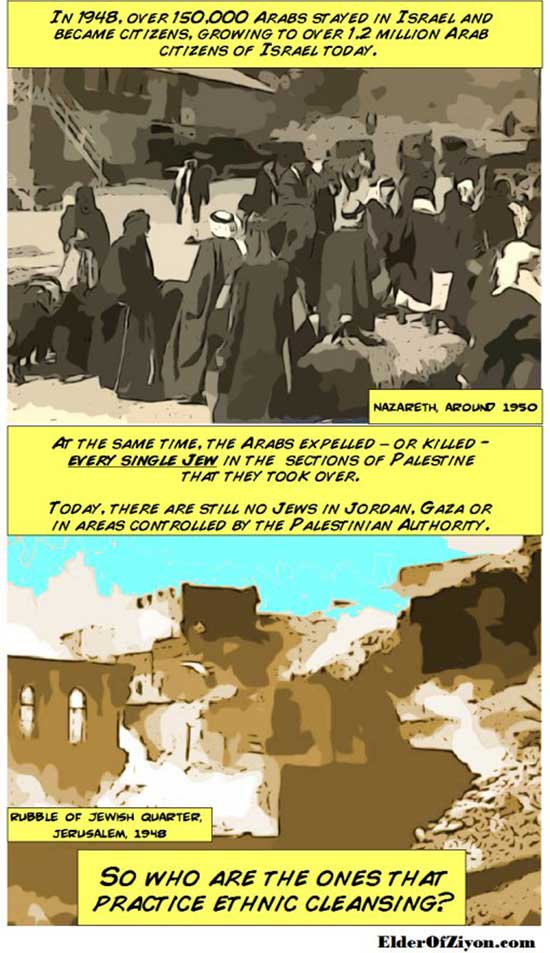
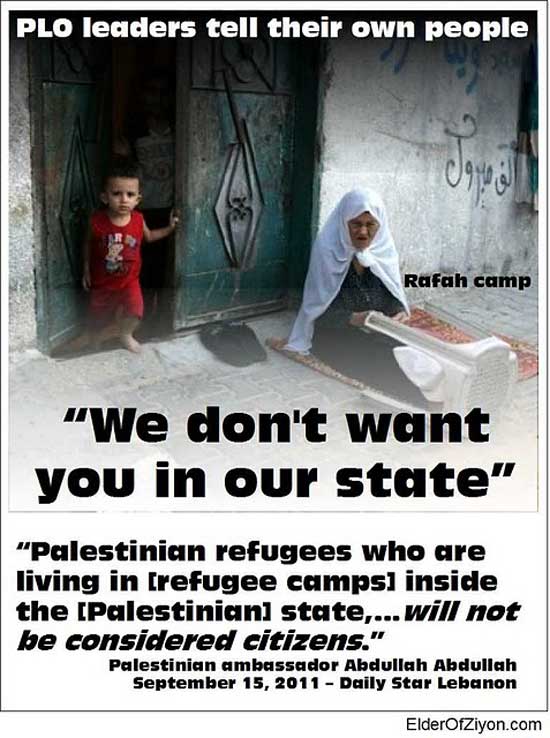
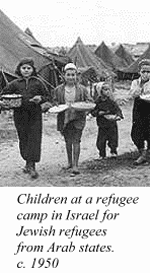 135 million refugees in the 20th century fled from India, Soviet Union, Poland, Romania, Hungary, Czechoslovakia, Yugoslavia, The Netherlands, Greece and Muslim states like Turkey, Pakistan, Bangladesh, Iraq, Algeria, Indonesia, Kuwait, Sudan, Morocco, Yemen, Syria, Egypt, Iran, Libya etc.
135 million refugees in the 20th century fled from India, Soviet Union, Poland, Romania, Hungary, Czechoslovakia, Yugoslavia, The Netherlands, Greece and Muslim states like Turkey, Pakistan, Bangladesh, Iraq, Algeria, Indonesia, Kuwait, Sudan, Morocco, Yemen, Syria, Egypt, Iran, Libya etc.
In 1945, as a result of Nazi Germany's defeat in WWII and the Potsdam Agreement, she lost 25% of her territory and 12 million Germans were expelled. Estimates of deaths associated with the expulsions of Germans are in the range of 400 thousands-3 millions.
In 1948, Palestinian Arabs and four Arab members of the UN went to war - not only against Israel, but against the UN decision for a two-state solution in Palestine. Hundreds of thousands of Arab Palestinians fled Jewish Israel, mostly to former Palestine Mandate areas, andhundreds of thousands of Jews fled Arab states.
& DISPLACED PALESTINIAN ARABS


 135 million refugees in the 20th century fled from India, Soviet Union, Poland, Romania, Hungary, Czechoslovakia, Yugoslavia, The Netherlands, Greece and Muslim states like Turkey, Pakistan, Bangladesh, Iraq, Algeria, Indonesia, Kuwait, Sudan, Morocco, Yemen, Syria, Egypt, Iran, Libya etc.
135 million refugees in the 20th century fled from India, Soviet Union, Poland, Romania, Hungary, Czechoslovakia, Yugoslavia, The Netherlands, Greece and Muslim states like Turkey, Pakistan, Bangladesh, Iraq, Algeria, Indonesia, Kuwait, Sudan, Morocco, Yemen, Syria, Egypt, Iran, Libya etc.In 1945, as a result of Nazi Germany's defeat in WWII and the Potsdam Agreement, she lost 25% of her territory and 12 million Germans were expelled. Estimates of deaths associated with the expulsions of Germans are in the range of 400 thousands-3 millions.
In 1948, Palestinian Arabs and four Arab members of the UN went to war - not only against Israel, but against the UN decision for a two-state solution in Palestine. Hundreds of thousands of Arab Palestinians fled Jewish Israel, mostly to former Palestine Mandate areas, andhundreds of thousands of Jews fled Arab states.
"text of a law drafted by the Political Committee of the Arab League which was intended to govern the legal status of Jewish residents of Arab League countries. It provides that beginning on an unspecified date all Jews except citizens of non-Arab states, would be considered 'members of the Jewish minority state of Palestine.' Their bank accounts would be frozen and used to finance resistance to 'Zionist ambitions in Palestine.' Jews believed to be active Zionists would be interned and their assets confiscated." "Already in some Moslem states such as Syria and Lebanon there is a tendency to regard all Jews as Zionist agents and 'fifth columnists.' There have been violent incidents with feeling running high. There are indications that the stage is being set for a tragedy of incalculable proportions." "In Syria a policy of economic discrimination is in effect against Jews. 'Virtually all' Jewish civil servants in the employ of the Syrian Government have been discharged. Freedom of movement has been 'practically abolished.' Special frontier posts have been established to control movements of Jews." "In Iraq no Jew is permitted to leave the country unless he deposits £5,000 ($20,000) with the Government to guarantee his return. No foreign Jew is allowed to enter Iraq even in transit." "In Lebanon Jews have been forced to contribute financially to the fight against the United Nations partition resolution on Palestine. Acts of violence against Jews are openly admitted by the press, which accuses Jews of 'poisoning wells,' etc." "Conditions vary in the Moslem countries. They are worst in Yemen and Afghanistan, whence many Jews have fled in terror to India. Conditions in most of the countries have deteriorated in recent months, this being particularly true of Lebanon, Iran and Egypt. In the countries farther west along the Mediterranean coast conditions are not so bad. It is feared, however that if a full-scale war breaks out, the repercussions will be grave for Jews all the way from Casablanca to Karachi."
Hundreds of thousands Arab Palestinians remained in Israel while all Jews where etnically cleansed in territory conquered by the Arabs.
Of the 135 million refugees in the 20th century 0.5% were Arab Palestinians; many were not refugees but Internally Displaced Persons (IDP).
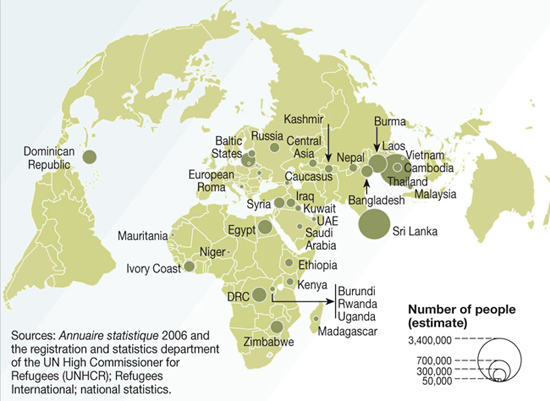

While Israel integrated Jewish refugees right away, Arab Palestinian IDP and their descendants are the world's only permanent "refugees".At any point during the past years, Arab governments could have helped the Arab Palestinian IDP settle down to a decent life. They could have created the infrastructure of an autonomous Palestine on the West Bank and the Gaza Strip that Jordan respectively Egyptcontrolled until 1967, or encouraged the resettlement of Palestinians inJordan, which constitutes the lion's share of the original mandate of Palestine. Rather than fund the Palestine Liberation Organization to foment terror against Israel the Arab regimes could have endowed Palestinian schools of architecture, engineering, medicine and law.What Israel did for Arab Palestinians and Jewish refugees from Arab lands, Arabs could have done much more sumptuously for the Arab Palestinians displaced by the same conflict. Instead, Arab dictators cultivated generations of "refugees" and focused on what the Palestinian Arabs lost while attempting to destroy Israel. These "refugees" endured brutal oppression and unmitigated suffering at the hands of their host Arab dictators, and their own corrupt dictator Yasser Arafat. Palestinian leaders absconded with billions of dollars in international aid money and used the pilfered funds to enrich themselves and to raise terror militias.
If refugees of Africa and Asia can be absorbed into Europe and America, why couldn't the Palestinian Arab refugees be integrated by their professed Arab brothers? If Jews from diverse cultures such as Russia and Ethiopia can be absorbed by their brethren into Israel, why can't the Arabs show their Palestinian brothers the same hospitality? Even if the Palestinian Arabs were expelled from their homes, in what way are they different from the Jews who were driven out of their homes in Morocco, Egypt, Algeria, Syria, Iraq and Iran, let alone the countries of Europe? The answer is that the Palestinian refugees in their Arab brother countries were not treated as human beings but instead, as pawns in a cruel political game.
Unequal UN mandates for refugees: Palestinians vs. all othersOf the 20th century 135 million refugees about 0.5% were Palestinians
UNHCR mandated for 20 million refugees worldwide - except "UNRWA's"
UNRWA aids only Palestinians (in West Bank, Gaza, Jordan, Syria & Lebanon)
UNRWA upgraded Palestinians internally displaced in 1948 to "refugees"
UNRWA upgraded even the descendants of these IDPs to "refugees"
UNRWA upgraded imaginary refugees to "registered refugees"
UNRWA's Palestinian "registered refugees" multiplied due to natural increase and deception from 914,000 in 1950 to over four million in 2002.
In another 52 years (that is 104 years after their ancestors left Israel), about 17.5 million descendants of Arab Palestinians will qualify for UNRWA "registered refugee" status (given the same UNRWA definitions, the same natural increase and the same deception).
Unequal UN mandates for refugees: Palestinians vs. all othersOf the 20th century 135 million refugees about 0.5% were Palestinians
UNHCR mandated for 20 million refugees worldwide - except "UNRWA's"
UNRWA aids only Palestinians (in West Bank, Gaza, Jordan, Syria & Lebanon)
UNRWA upgraded Palestinians internally displaced in 1948 to "refugees"
UNRWA upgraded even the descendants of these IDPs to "refugees"
UNRWA upgraded imaginary refugees to "registered refugees"
UNRWA's Palestinian "registered refugees" multiplied due to natural increase and deception from 914,000 in 1950 to over four million in 2002.
In another 52 years (that is 104 years after their ancestors left Israel), about 17.5 million descendants of Arab Palestinians will qualify for UNRWA "registered refugee" status (given the same UNRWA definitions, the same natural increase and the same deception).
Unequal UN staff members per refugee: Palestinians vs. all others UNHCR (non-Palestinians): 1:3,582
UNRWA (Palestinians): 1:165 (+2,000%)
UNRWA (Palestinians): 1:165 (+2,000%)
Unequal contributions: Arab vs. Western donorsArab donors currently contribute less than 3% of UNRWA's overall spending
Unequal naturalization: Arab League vs. Arab PalestiniansThe Arab League has fixed that Palestinians living in Arab countries should not be eligible for citizenship, e.g. 500,000 Arab Palestinians living in Saudi Arabia are excluded from naturalization.
Unequal wealth in the Palestinian Autonomy: Arafat vs. PalestiniansPalestinian Autonomy gross national income per capita per day: US$ 3.70
Palestinian dictator and terrorist Arafat: in Forbes Report 2003 "The World's Richest People"
Unequal wealth in the Palestinian Autonomy: Arafat vs. PalestiniansPalestinian Autonomy gross national income per capita per day: US$ 3.70
Palestinian dictator and terrorist Arafat: in Forbes Report 2003 "The World's Richest People"
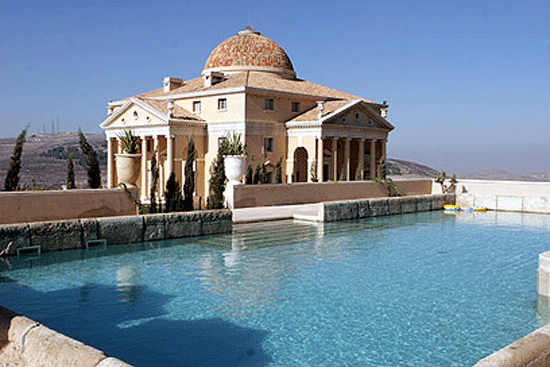 The magnificent 70-acre-estate
The magnificent 70-acre-estateUnequal names for neighborhoods: Palestinian towns vs. Arab states
"Wretched" Palestinian "refugee camps" in "occupied" West Bank and Gaza Strip are in fact neighborhoods of above average developed Arab towns including 15-storey apartment buildings, and tower office buildings near Palestinian universities and compounds of the Palestinian rich and famous.
 For example, Jenin (West Bank) consists of stone and concrete buildings, with private university,schools, chamber of commerce and industry,jewelry shops, CD shops,computer shops, sweet shops, travel agencies,restaurants, lawyers offices, engineering offices, banks, mosques,insurance agents, hospitals, clinics, pharmacies, sports clubs, taxis, traffic jams and everything else you expect in a community. Source: Palestine Yellow Pages
For example, Jenin (West Bank) consists of stone and concrete buildings, with private university,schools, chamber of commerce and industry,jewelry shops, CD shops,computer shops, sweet shops, travel agencies,restaurants, lawyers offices, engineering offices, banks, mosques,insurance agents, hospitals, clinics, pharmacies, sports clubs, taxis, traffic jams and everything else you expect in a community. Source: Palestine Yellow Pages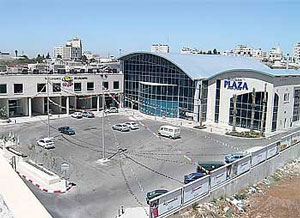
 Palestinian exchange website
Palestinian exchange websiteUnequal refugee populations in the Holy Land: Jews vs.Palestinians
Most Jewish Israelis are refugees from Arab states or descendants of such refugees
Most Arab Palestinian "refugees" are descendants of 1948 internally displaced persons (IDPs) or imaginary refugees.
Arab states refuse integration of Arab Palestinian "refugees" and their descendants
In 1991, hundreds of thousands of Palestinians evicted from Kuwait
Great numbers of Arab Palestinians expelled by Arab Gulf states
Great numbers of Arab Palestinians expelled by Arab Libya
Great numbers of Arab Palestinians displaced by Arab Iraq
Unequal publicity about refugees: Israel vs. Arab statesHundreds of thousands of Arab Jews fled Arab states
Hundreds of thousands of Arab Palestinians fled Jewish IsraelHundreds of thousands of Arab Palestinians evicted by Arab Kuwait
Great numbers of Arab Palestinians expelled by Arab Gulf states
Great numbers of Arab Palestinians expelled by Arab Libya
Great numbers of Arab Palestinians displaced by Arab Iraq
Hundreds of thousands of Arab Saharawis evicted by Arab Morocco
Hundreds of thousands of Kurds evicted by Arab Iraq
Millions of black Christian and Animist Africans displaced by Arab Sudan
Millions of black Muslim non-Arab Africans displaced by Arab Sudan
Unequal health in the Middle East: Arab Palestinians vs. other ArabsPalestinians have higher population growth, life expectancy, fertility rate and lower infant mortality than the Middle East average and than all the neighboring Arab states Egypt, Jordan, Syria and Lebanon.
Unequal partition of the Holy Land: Jews vs. ArabsOf the original 1922 League of Nations Palestine Mandate to establish the Jewish National Home (120,000 sq km), Israel received only 17% (20,330 sq km), while Arab Jordan received 77% (91,971 sq km).Golan Heights (1,200 sq km): 1%. The remaining 5% are today theWest Bank (5,860 sq km) and Gaza Strip (360 sq km) under Israeli orArab Palestinian rule, their current status subject to the Israeli-Palestinian Interim Agreement, their permanent status to be determined through further negotiation. Their total area of 6,220 sq km is matching equivalent to a circle with a radius of only 45 km. This is 1/2400 (0.04%!) of the total area of the Arab world & Iran (15.15 million sq km).
Unequal human development: Arab Palestinians vs. the other ArabsThe "wretched" Palestinians in the Israeli "Occupied Palestinian Territories" have higher Human Development Index (HDI = 0.731) than the 22 Arab states average (0.662) and than the average (0.707) of all neighboring Arab states Egypt (0.648), Jordan (0.743), Syria (0.648) and Lebanon (0.752) and only a bit lower than oilrich Saudi Arabia (0.769). HDI source: United Nations Human Development Report 2003
Unequal education/employment for Palestinians: Arab states vs. IsraelIn Arab Lebanon, Arab Palestinians do not have social and civil rights, and have a very limited access to the government's public health or educational facilities and no access to public social services.For years, Palestinians were not allowed to work in dozens of professions in Lebanon including as accountants, secretaries, deputy directors, marketing agents, salespersons, pharmacists, electricians, guards, drivers, cooks, hairdressers or engineers. In June 2005, however, Lebanon’s Minister of Labour issued a decision according to which Palestinian refugees residing in Lebanon would be permitted to work in various occupations that were previously barred to them by law, though not those governed by a professional syndicate (such as engineering, medicine and pharmacy), from which they are still barred.
Under Israeli rule, Arab Palestinian universities in East-Jerusalem, West Bank and Gaza Strip (all founded after 1967 when Israel took over these territories from Arab Jordan and Arab Egypt):
 Al Azhar University of Gaza
Al Azhar University of Gaza
 Al-Quds University (6 campuses in Jerusalem and West Bank)
Al-Quds University (6 campuses in Jerusalem and West Bank)
 Arab American University of Jenin
Arab American University of Jenin
 Bethlehem University of Bethlehem
Bethlehem University of Bethlehem
 Birzeit University of Birzeit
Birzeit University of Birzeit

 Hebron University of Hebron
Hebron University of Hebron
 Ibrahimieh Community College of Jerusalem
Ibrahimieh Community College of Jerusalem
 Islamic University of Gaza
Islamic University of Gaza
 Palestine Polytechnic Institute
Palestine Polytechnic Institute
 An-Najah National University of Nablus official website: "In 1977 it became An-Najah National University with Faculties of Arts and Science. In 1978 An-Najah National University joined the Association of Arab Universities as a full member. The university grew and advanced from this point forward constructing auditoriums, a library and a student center until it was declared a "closed military area" by the Israeli authorities in 1988. It was reopened in 1991 and has beenfully functioning since. It has 10 Undergraduate Faculties, 30 Masters, and one Ph.D program. The university has also added nine professional and technical centers, such as the Center for Water and Environmental Studies and the Center for Urban and Regional Planning. An-Najah National University continues to advance and develop and offer the highest level of secondary education in the West Bank. The foundation has already been laid for its new campus, which will house the School of Medicine, a Teaching Hospital and its existing Science and Technical Faculties, and An-Najah hopes to expand to hold more than 10,000 students by the new millenium.” You got it? From 1948-1967, under the occupation of the Arab Jordanian brothers, Nablus got no university. But since 1977, under Israeli rule, Nablus not only got their first university but “the university grew and advanced”. Needless to say, while tens of thousands of Arabs study at Israeli universities, no Jew can safely enter Nablus: Hamas and Islamic Jihad Triumph in Al-Najah University Student Elections. The USA and the EU classify Hamas andIslamic Jihad as terrorist organizations.
An-Najah National University of Nablus official website: "In 1977 it became An-Najah National University with Faculties of Arts and Science. In 1978 An-Najah National University joined the Association of Arab Universities as a full member. The university grew and advanced from this point forward constructing auditoriums, a library and a student center until it was declared a "closed military area" by the Israeli authorities in 1988. It was reopened in 1991 and has beenfully functioning since. It has 10 Undergraduate Faculties, 30 Masters, and one Ph.D program. The university has also added nine professional and technical centers, such as the Center for Water and Environmental Studies and the Center for Urban and Regional Planning. An-Najah National University continues to advance and develop and offer the highest level of secondary education in the West Bank. The foundation has already been laid for its new campus, which will house the School of Medicine, a Teaching Hospital and its existing Science and Technical Faculties, and An-Najah hopes to expand to hold more than 10,000 students by the new millenium.” You got it? From 1948-1967, under the occupation of the Arab Jordanian brothers, Nablus got no university. But since 1977, under Israeli rule, Nablus not only got their first university but “the university grew and advanced”. Needless to say, while tens of thousands of Arabs study at Israeli universities, no Jew can safely enter Nablus: Hamas and Islamic Jihad Triumph in Al-Najah University Student Elections. The USA and the EU classify Hamas andIslamic Jihad as terrorist organizations.
Under Israeli rule, Arab Palestinian universities in East-Jerusalem, West Bank and Gaza Strip (all founded after 1967 when Israel took over these territories from Arab Jordan and Arab Egypt):

Is it true that the Gaza Strip’s Palestinians live in the world's most crowded place? Compare:
Gaza Strip: 1.4 million residents on 360 km² = 3,900 inhabitants/km²
Tel Aviv, Israel: 7,221/km²
Hong Kong Administrative Region, China: 6.9 million residents on 1,103 km² = 6,206/km²
Taipei, Taiwan: .2,6 million residents on 272 km² = 9,660/km²
Mumbay, India: 17.5 million residents on 438 km² = 28,800/km²
Singapore: 4.4 million residents on 693 km² =6,400/km²
Cairo, Egypt: 25,325/km²
Casablanca, Morocco: 15,514/km²
Tunis, Tunisia: 9,164/km²
Istanbul, Turkey: 7,013/km²
Lagos, Nigeria: 13,591/km²
Caracas, Venezuela: 16,266/km²
Rio de Janeiro, Brazil: 8,280/km²
Moscow, Russia: 14,605/km²
Warsaw, Poland: 5,198/km²
London, United Kingdom: 5,100/km²
Naples, Italy: 4,118/km²
Berlin, Germany: 3,154/km²
Monaco: 16,600/km²
Mexico City, Mexico: 9,736/km²
Los Angeles, USA: 2,436/km²
West Bank: 425/km²
Gaza Strip: 1.4 million residents on 360 km² = 3,900 inhabitants/km²
Tel Aviv, Israel: 7,221/km²
Hong Kong Administrative Region, China: 6.9 million residents on 1,103 km² = 6,206/km²
Taipei, Taiwan: .2,6 million residents on 272 km² = 9,660/km²
Mumbay, India: 17.5 million residents on 438 km² = 28,800/km²
Singapore: 4.4 million residents on 693 km² =6,400/km²
Cairo, Egypt: 25,325/km²
Casablanca, Morocco: 15,514/km²
Tunis, Tunisia: 9,164/km²
Istanbul, Turkey: 7,013/km²
Lagos, Nigeria: 13,591/km²
Caracas, Venezuela: 16,266/km²
Rio de Janeiro, Brazil: 8,280/km²
Moscow, Russia: 14,605/km²
Warsaw, Poland: 5,198/km²
London, United Kingdom: 5,100/km²
Naples, Italy: 4,118/km²
Berlin, Germany: 3,154/km²
Monaco: 16,600/km²
Mexico City, Mexico: 9,736/km²
Los Angeles, USA: 2,436/km²
West Bank: 425/km²
Answer: In every other instance, the pain of dispossession, statelessness, and poverty has diminished over time. Refugees eventually either resettled, returned home or died. Their children - whether living in South Korea, Vietnam, Pakistan, Israel, Turkey, Germany or the United States - then shed the refugee status and joined the mainstream.
Not so the Palestinians. For them, the refugee status continues from one generation to the next, creating an ever-larger pool of anguish and discontent.
Several factors explain this anomaly but one key component - of all things - is the United Nations' bureaucratic structure. It contains two organizations focused on refugee affairs, each with its own definition of "refugee":
The U.N. High Commission for Refugees applies this term worldwide to someone who, "owing to a well-founded fear of being persecuted . . . is outside the country of his nationality." Being outside the country of his nationality implies that descendants of refugees are not refugees. Cubans who flee the Castro regime are refugees, but not so their Florida-born children who lack Cuban nationality. Afghans who flee their homeland are refugees, but not their Iranian-born children. And so on.
The U.N. Relief and Works Agency (UNRWA), an organization set up uniquely for Palestinian refugees in 1949, defines Palestinian refugees differently from all other refugees. They are persons who lived in Palestine "between June 1946 and May 1948, who lost both their homes and means of livelihood as a result of the 1948 Arab-Israeli conflict." Especially important is that UNRWA extends the refugee status to "the descendants of persons who became refugees in 1948." It even considers the children of just one Palestinian refugee parent to be refugees.
The High Commission's definition causes refugee populations to vanish over time; UNRWA's causes them to expand without limit. Let's apply each definition to the Palestinian refugees of 1948, who by the U.N.'s (inflated) statistics numbered 726,000. (Scholarly estimates of the number range between 420,000 to 539,000.)
The High Commission definition would restrict the refugee status to those of the 726,000 yet alive. According to a demographer, about 200,000 of those 1948 refugees remain living today.
UNRWA includes the refugees' children, grandchildren and great-grandchildren, as well as Palestinians who left their homes in 1967, all of whom add up to 4.25 million refugees.
The 200,000 refugees by the global definition make up less than 5 percent of the 4.25 million by the UNRWA definition. By international standards, those other 95 percent are not refugees at all. By falsely attaching a refugee status to these Palestinians who never fled anywhere, UNRWA condemns a creative and entrepreneurial people to lives of exclusion, self-pity and nihilism.
The policies of Arab governments then make things worse by keeping Palestinians locked in an amber-like refugee status. In Lebanon, for instance, the 400,000 stateless Palestinians are not allowed to attend public school, own property or even improve their housing stock.
It's high time to help these generations of non-refugees escape the refugee status so they can become citizens, assume self-responsibility and build for the future. Best for them would be for UNRWA to close its doors and the U.N. High Commission to absorb the dwindling number of true Palestinian refugees."
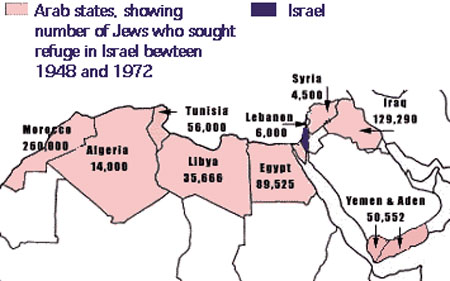
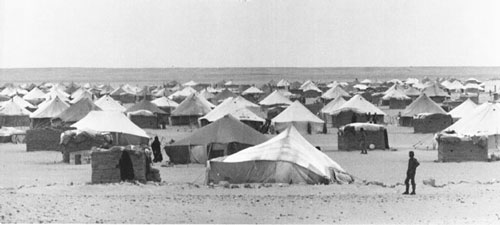
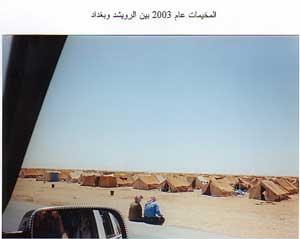
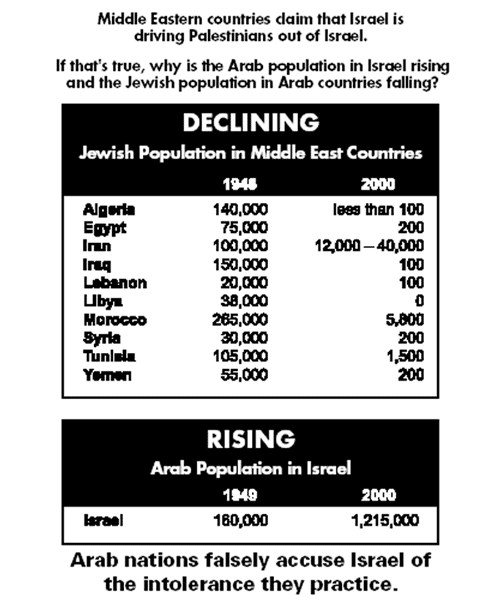
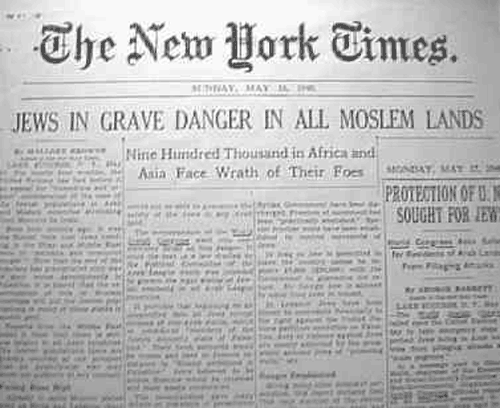
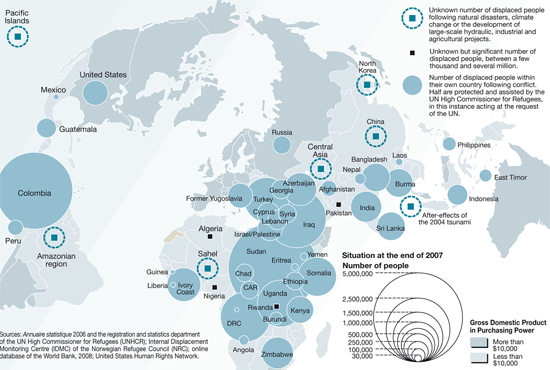
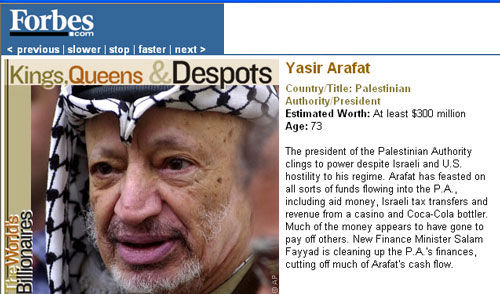
No comments:
Post a Comment